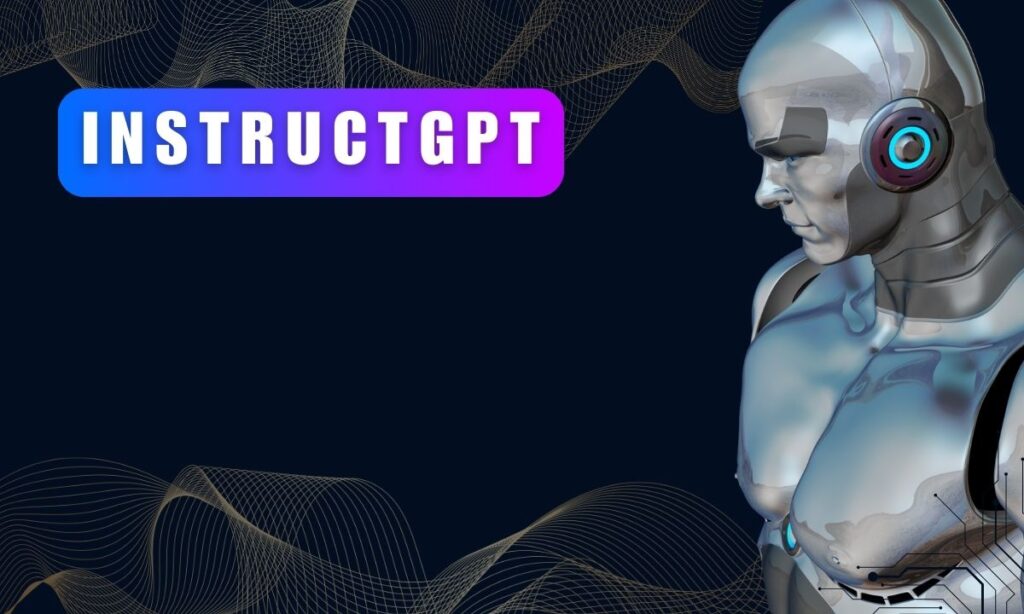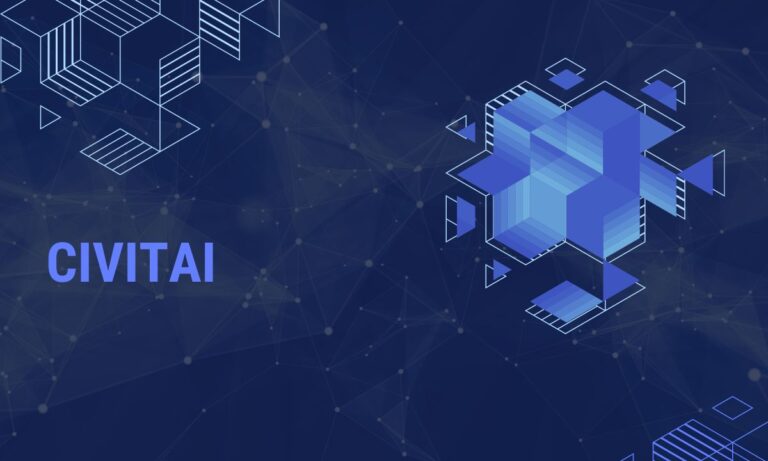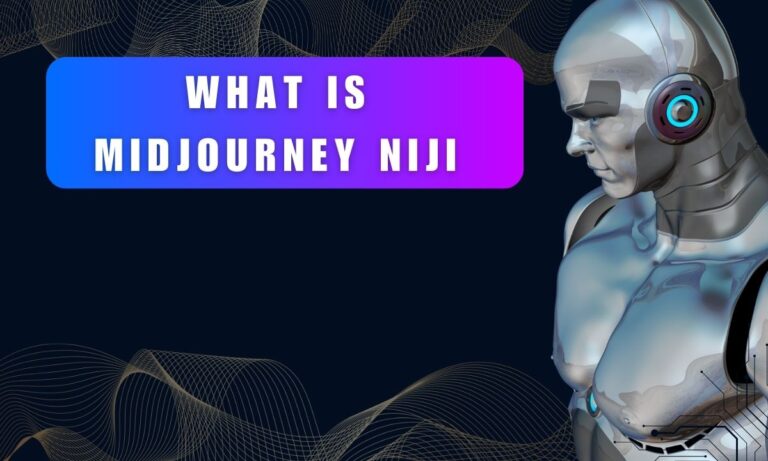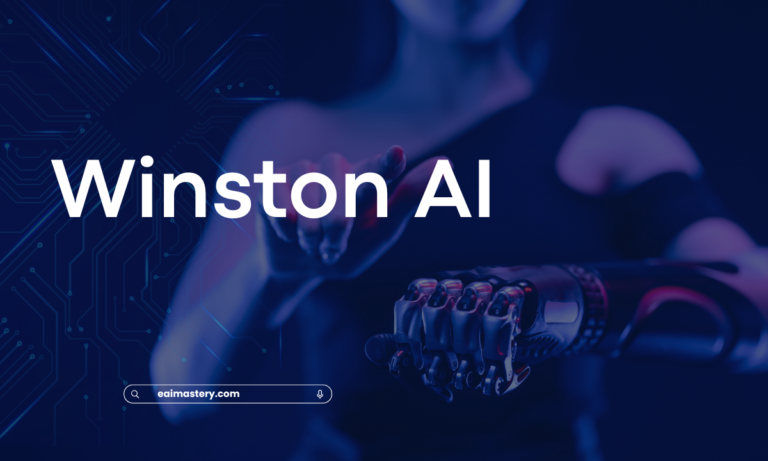InstructGPT (A Complete Guide About this Revolutionary Tool)
The capacity of language models to recognize and carry out user intentions may not necessarily grow with their size. For instance, results from bigger models may be unreliable, insulting, or otherwise useless to consumers.
In essence, these models could not fit their consumers’ demands very well. In these situations, people look for a model similar to GPT-3.5 but tailored for certain domains and jobs. There is a solution for this called InstructGPT. Let’s take a thorough look at how InstructGPT works, its real-world uses, its architectural insights, and more.

What Is Instruct GPT?
InstructGPT, created by OpenAI, is a substantial improvement over GPT-3 in terms of computer programming. Its main goal is to better understand detailed instructions and carry out activities quickly and accurately.
The amount of parameters in a model might change based on the version or implementation. Notably, the GPT-3 model is one of the biggest in the area of language processing and has an astonishing 175 billion parameters.
The fundamental idea of InstructGPT is to provide the model the ability to comprehend and carry out instructions expressed in plain language, enabling it to do a wide range of activities, including but not limited to data entry, data cleaning, and summarization.
This skill is developed by fine-tuning the GPT-3 model on a large dataset of tasks and instructions, which enables the model to understand the intricacies of instructions and the technique needed to complete these tasks successfully.
The main goal of InstructGPT is to speed up and simplify the automation of time-consuming and repetitive processes for businesses and organizations. InstructGPT seeks to align its actions with human intents through reinforcement learning and ongoing human input to produce superior results that are suited for the setting.
Instruct GPT Architecture
The transformer architecture, a neural network design initially presented by Google researchers in a 2017 publication, served as the basis for the construction of Instruct GPT.
The transformer has several layers, each of which has a feed-forward neural network and a self-attention mechanism.
When producing predictions, the model may use this self-attention process to give different input components varied amounts of weight, with help from the feed-forward neural network.
This architecture is fine-tuned for Instruct GPT to excel in particular tasks like language translation or question answering. To do this, the model must be trained using a large dataset that is specifically designed for the job at hand.
Additionally, pre-training on a sizable corpus of text data helps Instruct GPT to understand broad linguistic patterns, improving its performance on a variety of natural language processing (NLP) applications.
Notably, Instruct GPT makes use of a method called “few-shot learning,” which enables the model to master a new job with a small number of instances, negating the requirement for a big dataset of labeled examples.
Working of InstructGPT
The original GPT model produces text that is human-like and serves as a language model. This is accomplished by guessing the following word in a phrase using the context that the words before it have supplied.
In contrast, Instruct GPT is intensively designed to excel at a specific task or group of tasks. These duties might involve giving answers to inquiries, interpreting text, or summarizing content. By fine-tuning the pre-trained GPT model on a dataset that is aligned with the particular job, this specialization takes place.
Transfer learning, the act of fine-tuning a model to a new task, makes use of the model’s prior expertise. The particular method used by Instruct GPT is referred to as “few-shot learning.”
With the use of this machine learning technique, the model can learn and predict the future with little or no data. When the model is trained with just a few instances per category, few-shot learning is effective for tasks like text categorization, question answering, and text production.
Instruct GPT uses its pre-training on a large text corpus to expand its knowledge to new categories with a minimal amount of instances. The model’s parameters are adjusted for the particular job in Instruct GPT by fine-tuning on a tiny annotated dataset.
As a result, with only a small sample size, the model may make predictions for categories that have not yet been observed.
The adaptability of GPT and Instruct GPT is their main difference. While Instruct GPT is designed for a certain set of activities, GPT may be fine-tuned for a variety of jobs.
Instruct GPT is more effective and accurate for these particular tasks thanks to its specialization, but it is less versatile than the original GPT.
How To Access and Use InstructGPT?
To utilize InstructGPT effectively, you must follow a specific set of steps:
1. Acquire an OpenAI API key: Before employing the OpenAI API, it is essential to register for an API key.
2. Install the OpenAI API package: To make use of the OpenAI API, you’ll need to install the OpenAI API package on your local machine. You can easily accomplish this by using “pip,” the Python package installer, via the following command in your terminal: “pip install open.”
3. Initialize the OpenAI API: After successfully installing the OpenAI API package, you can initiate the API by importing the “openai” module and configuring your API key as an environment variable. This can be done by inserting the following code into your Python script:
| import openai openai.api_key = “YOUR_API_KEY” |
4. Construct a text prompt: When using InstructGPT, it’s vital to provide a text prompt that conveys clear and concise instructions to the model regarding the intended task. The prompt should be composed in English.
For instance, if you aim to employ InstructGPT for summarization, your text prompt might resemble this:
| prompt = “Summarize the following article: ‘Studies Reveal That Consuming Two to Three Cups of Coffee Daily May Offer Cardiovascular Benefits.'” |
5. Generate a response: Following the creation of a text prompt, you can employ the OpenAI API to generate a response using the InstructGPT model. This can be accomplished by invoking the “openai.Completion.create” method and supplying your API key, the text prompt, and any other pertinent parameters. For example:
| response = openai.Completion.create( engine=”text-davinci-002″, prompt=prompt, max_tokens=100 ) |
6. Evaluate the response: Once you have obtained a response, it is imperative to assess it to ensure it aligns with your specific requirements.
Depending on the task at hand, you may evaluate the response based on factors like accuracy, coherence, or relevance. Should the response fall short of your expectations, you can modify your text prompt or adjust the parameters employed for response generation.
6. Repeat as necessary: You are free to repeat this process as often as needed to generate responses for varying text prompts or to perform different natural language processing tasks. Just remember to furnish explicit and succinct text prompts that clearly instruct the model on the desired task and carefully scrutinize the responses to confirm they meet your criteria.
What is the Difference Between Instruct GPT and ChatGPT?
Instruct-GPT and ChatGPT are indeed two distinct models developed by OpenAI, and their primary difference lies in their intended use cases:
| ChatGPT | InstructGPT |
| ChatGPT is designed for conversational purposes. It excels at generating human-like responses in a dialogue context. It Is trained on a dataset that includes a wide range of conversational interactions, allowing it to engage in conversations, answer questions, and provide responses that mimic natural human conversation. ChatGPT is ideal for applications like chatbots, virtual assistants, and general-purpose dialogue systems. | Instruct-GPT, on the other hand, is a task-oriented model. Its primary function is to complete specific tasks by following the instructions provided to it. It can be used for tasks such as code generation, text-to-SQL queries, summarization, and more. Instruct-GPT is fine-tuned on a diverse set of tasks, allowing it to understand and execute instructions accurately, making it suitable for applications that require task automation and specific task completion. |
Both models are based on the transformer architecture, which is a deep learning architecture known for its effectiveness in natural language processing tasks. However, the key distinction is in their training data and fine-tuning.
Instruct-GPT is fine-tuned on a more varied set of tasks, enabling it to excel in specific task-oriented scenarios, while ChatGPT is fine-tuned for more general conversational interactions.
5 Potential Applications of InstructGPT
InstructGPT has adaptable qualities that are useful in a variety of contexts. It excels in deciphering and carrying out instructions from carefully written textual prompts, making it a flexible tool with broad application. Here are some crucial areas where InstructGPT is having a big effect:
1. Content Creation: For producing a variety of content, including blog posts, essays, creative writing, and even computer code, InstructGPT is quite helpful. Its capacity for following instructions, supported by reinforcement learning and human direction, enables content producers to create customized products.
2. Customer Support: Using InstructGPT as a virtual customer assistant reduces the amount of time spent on customer support. It adeptly responds to client inquiries, gives information, and offers solutions based on human input, so increasing efficiency and responsiveness.
3. Education and Training: InstructGPT is an effective instructional tool, providing extensive explanations and answers on a wide range of topics. As a result, it is a helpful resource for both students and teachers.
4. Research Support: In research, InstructGPT excels in summarizing research articles, analyzing data, and providing significant insights, making it indispensable to researchers.
5. Personal Assistance: InstructGPT may power personal assistant programs, assisting users with scheduling, replying to inquiries, and carrying out activities based on user-defined instructions.
These are only a few examples of InstructGPT’s possible text prompt uses. We anticipate uncovering even more novel and significant applications for this formidable AI model as technology improves.
The future of InstructGPT is full of potential, with unlimited possibilities just waiting to be discovered. However, it is critical to recognize the existence of some limits, which are discussed in the next section.
Advantages of Instruct GPT
1. Large Scale Training: InstructGPT has been trained on a vast quantity of different data, allowing it to produce high-quality and contextually appropriate replies.
2. State-of-the-Art Architecture: InstructGPT employs the Transformer architecture, which is now the cutting-edge in NLP.
3. Versatile: InstructGPT may be customized for a variety of NLP tasks such as question answering, language translation, and text production.
4. Improved Performance: In numerous NLP benchmarks, InstructGPT surpassed earlier models, indicating its higher performance.
5. Easy to Integrate: InstructGPT is simple to incorporate into current systems, allowing enterprises to take advantage of its capabilities for NLP-related activities.
Limitations of InstructGPT
InstructGPT represents a significant advancement in the realm of AI language models, showing notable enhancements in its ability to comprehend and execute instructions while reducing the incidence of generating inaccurate information when compared to its predecessor, GPT-3.
Nonetheless, it is crucial to acknowledge that InstructGPT is not flawless in certain aspects.
1. Accuracy and Truthfulness: Instruct GPT, while improved, is not infallible when it comes to providing entirely accurate and factual responses.
2. Toxicity: The InstructGPT models, while making strides, still exhibit the capacity to generate content that may be deemed offensive or harmful.
3. Bias: InstructGPT is not immune to generating outputs that reflect biases or preconceptions.
4. Hallucinations: At times, InstructGPT can produce responses that wander into irrelevant or fanciful territory, deviating from the input’s context.
5. Excessive Length in Responses: In some cases, InstructGPT tends to offer excessively lengthy answers for concise questions.
Despite these limitations, InstructGPT constitutes a notable step forward in the domain of AI-powered language models. Its potential is undeniably substantial and warrants serious consideration for various applications.
Conclusion
Finally, InstructGPT represents a significant advancement in the growth of AI language models. It has enormous promise in content production, customer service, education, research, and personal help because of its capacity to interpret and execute specific instructions across a wide range of tasks.
It is a vital tool for enterprises and organizations because of its large-scale training, cutting-edge architecture, adaptability, and increased performance.
However, it is critical to recognize its limits, which include concerns with accuracy, toxicity, prejudice, hallucinations, and response duration. As AI technology advances, InstructGPT stands out as a strong tool with the potential to shape the future of natural language processing.
Reference: Training language models to follow instructions with human feedback






